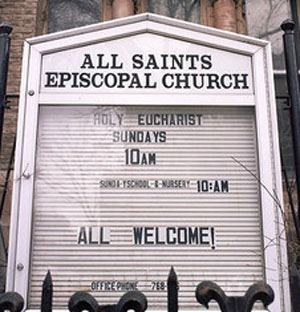There’s No Place Like Home
Redeemer Ambassadors have now visited nearly 60 churches. We are perennial visitors. If there is such a thing, we are experts. Practice makes perfect.
Our status is unique. The Southeastern Pennsylvania Synod of the Evangelical Lutheran Church in America locked us out of God’s House. What they expected to happen as a result is unclear. We started visiting churches.
We are learning the strengths and weaknesses of churches and their hospitality efforts.
Some congregations are more welcoming than others.
- Many churches have no hospitality program.
- Some congregations have welcome teams who are ready to tell you all about their ministry.
- Two gave us a token gift — a mug and a candle.
- Most think they are very warm and inviting, even those who don’t say a word to us.
Some have a genuine sense of caring that permeates the entire community. Three of the most welcoming churches we visited had no pastoral presence.
Some say “welcome” but seem a bit suspicious. We understand. There’s a lot of gossip out there. The bishop even sent a letter warning churches that we visit—including a number to call if we cause trouble. How welcoming can you get!?
That was three years ago and we’ve done no harm. None was intended.
The bishop’s unwelcoming tone trickles down. Think what the opposite might do. Clergy could play a big role in setting a welcoming example. They often do not.
We have noticed that pastors are rarely present during fellowship and often stay in the sanctuary or hallway, talking to a select few. That translates in the fellowship room to pockets of people talking to one another with no effort to include visitors.
In three years and 56 visits only one pastor wrote acknowledging our visit afterwards. When we followed up, the conversation stopped. One pastor called and met with us. His church ended up leaving the ELCA. Another pastor returned a call when one of our ambassadors called with a question. Pastors don’t want any part of the situation they helped to create.
In general, the welcoming approach of churches tends to be self-centered. They have a product to sell — membership. And with the purchase of this product you get the following benefits. The list that might follow is a little unclear.
- Salvation?
- Love?
- Acceptance in our community?
- The right to contribute?
- The right to vote (until the bishop takes your vote away)?
- The right to be part of something bigger?
- The right to take the blame?
- The responsibility but not the power to move the church forward?
- The pleasure and satisfaction of doing things our way?
This may sound pessimistic and cynical but it is precisely the uncertainty that lay people face. If visitors are new to church, it is even more unsettling.
The approach of the church with every encounter — with individuals or with groups — should be filled with questions. Gracious, non-judgmental, questions.
- How did you find us? What brought you here?
- Where are you from? What is your work?
- Do you have family? How can we serve your family?
- How can we help you?
- How can we get to know you?
- Do you have a special burden we might be able to lift?
The approach toward visitors should not be list of “talking points”—programs offered, your congregation’s wish list.
It is the job of the church to love others. We can’t do that when we are always looking in a mirror.
In general, although our Ambassadors enjoy our visits, we very much look forward to our own worship once a month. There is no place like home, even if home is borrowed space in a local theater. We can sing the hymns we want to sing, pray the prayers we need to pray, know that the people we are communing with are not attacking us or taking what is ours or looking at us with judging and critical eyes—without ever talking with us outside a court room.
Putting a WELCOME sign by your front door is a promise. Keeping that promise is work that each member needs to be trained to do.

